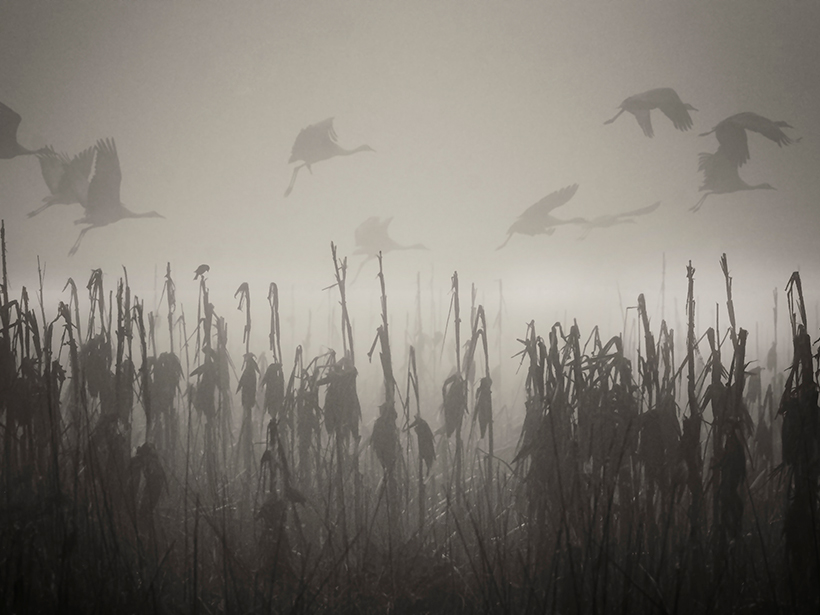Source: Journal of Geophysical Research: Atmospheres
Bounded to the east by the Sierra Nevada mountains and to the west by the Coastal Range, California’s Central Valley is one of the most productive agricultural regions in the world. Some estimates indicate the region supplies more than half of the fruits, vegetables, and nuts grown in the United States.
The valley is so hospitable to agriculture in part because of a unique meteorological phenomenon known as tule fog. The dense ground fog enshrouds the valley during the winter and provides a necessary winter chill that increases the productivity of fruit and nut trees. However, it also drastically reduces visibility around the region, particularly at night and in the early mornings. The bleary episodes rank as one of the primary causes of weather-related accidents in the state.
Over the past 90 years, the frequency of tule fog has boomeranged dramatically. From 1930 to 1970, the fog’s frequency consistently climbed—cities like Fresno experienced an 85% increase in fog events. Yet starting around 1980, the fog began to dwindle. Weather observations indicate a 76% reduction in fog over the past 36 winters.
Gray et al. investigated tule fog to determine the drivers behind its upward then downward trend and its year-to-year variability. The authors used the National Oceanic and Atmospheric Administration’s archives to craft a history of fog frequency dating to 1909. They used records from the National Climatic Data Center to stitch together a fog climatology that included data on temperature, dew point, precipitation, wind speed, and other climate variables. Additionally, they used Environmental Protection Agency data and local city inventories to evaluate how air pollution, specifically particulate matter (PM) and oxides of nitrogen (NOx), affects the fog. NOx is a critical precursor to wintertime nitrate formation with a long observational record, making it an ideal proxy for PM.
The authors discovered that annual fluctuations in fog occurrence are driven by local weather; of the climatic variables analyzed, dew point depression appeared to be the most critical measurement. The findings suggest that there has not been a decrease in the number of days with optimal fog conditions since 1930, but now nearly all tule fog events occur under optimal conditions, which was not the case 35 years ago.
Long-term tule fog trends are instead driven by air pollution: Pollution and fog increased until 1970 and decreased after 1980 when effective controls and regulations were implemented in California. The results showed that under low dew point depression conditions, every 10 parts per billion decrease in NOx resulted in five fewer fog days per year.
Changes in tule fog frequency affect the transportation, agriculture, drought resistance, and climate of California’s Central Valley, and these findings offer insights for managers and planners. Furthermore, the study reveals an unintended consequence of reducing air pollution. (Journal of Geophysical Research: Atmospheres, https://doi.org/10.1029/2018JD029419, 2019)
—Aaron Sidder, Freelance Writer
Citation:
Sidder, A. (2019), Fading air pollution reduces fog in Central Valley, Eos, 100, https://doi.org/10.1029/2019EO125021. Published on 12 June 2019.
Text © 2019. The authors. CC BY-NC-ND 3.0
Except where otherwise noted, images are subject to copyright. Any reuse without express permission from the copyright owner is prohibited.

